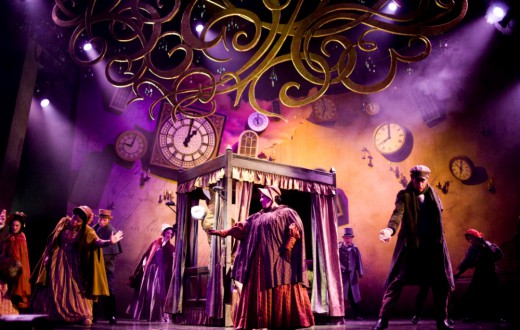Acting is an art form that involves the entire being, and the voice plays a pivotal role in it. Voice modulation is the ability to adapt one’s voice which can breathe life into a character, making it seem more real and relatable.
Understanding Voice Modulation
Voice modulation refers to the act of manipulating or adapting one’s voice in order to communicate varying emotions, intentions, or personalities. This entails altering different elements of the voice, including pitch, volume, tempo, and tone. By utilizing voice modulation techniques, actors can effectively convey a character’s emotions with greater authenticity and enhance the liveliness and captivation of dialogues. It can be used to reflect a character’s personality traits, age, or social background.
Techniques of Voice Modulation
You can use some or all of the below techniques for different characters.
Breathing Exercises
Proper breath control is essential for effective voice modulation. Deep, diaphragmatic breathing provides a strong foundation, supports vocal variety, and ensures vocal health. Exercises such as belly breathing, where you breathe deep into your diaphragm rather than shallowly into your chest, can increase your lung capacity and strengthen your voice.
Pitch Variation
Pitch refers to how high or low your voice sounds. Altering pitch is a powerful way to express different emotions or attitudes. A higher pitch can indicate excitement or fear, while a lower pitch can suggest seriousness or authority. To exercise pitch control, practice speaking or singing along a musical scale to get a feel for moving your voice up and down the pitch range.
Volume Control
Changing the volume of your voice can be an effective tool for emphasizing certain words or expressing emotions. Speaking louder can convey strong emotions like anger or excitement, while speaking softer can communicate sadness or intimacy. However, be cautious not to strain or whisper, as this can harm your vocal cords and make your voice less clear.
Pace and Pause
The speed at which you speak can greatly impact the audience’s perception of your character. Speaking fast can create a sense of urgency or show nervousness, while slowing down can add gravity to your words or show calmness. Additionally, deliberate pauses can create suspense, indicate a change of thought, or give the audience time to absorb what’s being said.
Tone and Timbre
Tone is the emotional quality of your voice, and timbre is its unique color or texture. Experiment with different emotional tones such as happiness, sadness, anger, or surprise. Changing your voice’s timbre can help differentiate characters and make them more distinctive. This can be done by adding roughness for a rugged character or softness for a gentle character.
Voice Modulation Exercises
To improve voice modulation, regular practice is key. Start with simple exercises, such as reading aloud a text and trying to convey different emotions or characters. Record your voice to analyze your performance and identify areas for improvement. Mimic the voices of different characters in films or cartoons to practice versatility.
Taking Care of Your Voice
Your voice is an instrument, and like any instrument, it needs proper care to perform well. Stay hydrated, avoid shouting or whispering, and warm up your voice before performances. If you experience consistent voice strain or discomfort, consider consulting a speech-language pathologist or a vocal coach.
Here are some examples of actors who have used voice modulation:
Benedict Cumberbatch as Smaug in “The Hobbit” Trilogy: Cumberbatch used a deep, gravelly voice to portray the menacing dragon, Smaug. His voice modulation played a significant part in creating a fearsome and unforgettable character.
James Earl Jones as Darth Vader in “Star Wars”: With a deep, resonant voice, Jones gave Darth Vader his iconic intimidating presence. This voice is instantly recognizable and has become synonymous with the character.
Robin Williams in “Aladdin”: As the Genie, Williams used an incredibly broad range of voices to portray various personalities and characters within one role, showcasing his exceptional talent for voice modulation.
Heath Ledger as The Joker in “The Dark Knight”: Ledger used a unique voice – a balance of a high-pitched tone and a dark undertone – to bring the character of the Joker to life. This distinctive modulation contributed to his character’s eerie and unsettling presence.
Meryl Streep in “Sophie’s Choice”: Streep used voice modulation to perfect her Polish accent in the film, showing the depth of her character and her struggles. This performance won her an Academy Award for Best Actress.
Tom Hanks as Woody in “Toy Story”: Tom Hanks lent his distinctive, comforting voice to the character of Woody, giving the cowboy toy a sense of real emotion and personality.
Margot Robbie as Harley Quinn in “Suicide Squad”: Robbie adopted a high-pitched, New York-accented voice to portray the manic energy and whimsical yet dangerous nature of her character, Harley Quinn.
Daniel Day-Lewis in “Lincoln”: Day-Lewis adopted a higher pitched, somewhat reedy voice to portray Abraham Lincoln, based on historical descriptions of the president’s voice. This modulation gave the character authenticity and depth.
Scarlett Johansson as Kaa in “The Jungle Book”: Johansson used a soft, hypnotic, and alluring voice for her role as Kaa, the python, which was in stark contrast to her usual deeper, more resonant voice.
These actors show that voice modulation, when done right, can make a character far more compelling and memorable.







